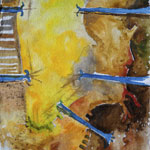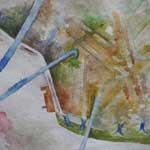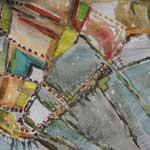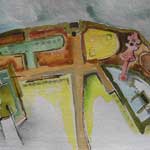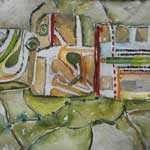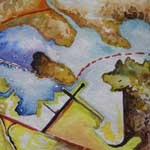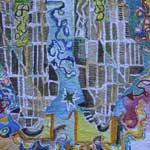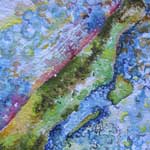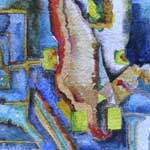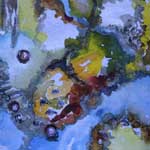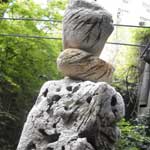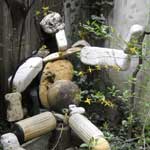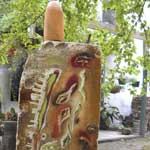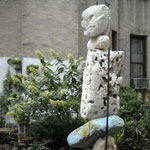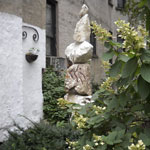Kathy Creutzburg
I have always been an active participant within my physical environment, observing the interface between nature and man-made design from various points of view. My mind's eye perceives form and detail which I incorporate into my artistic practice as I I collect natural and discarded objects along the way to later assemble into sculptures that portray the essence of how human imagination shapes the natural world.
An active viewership community is key in creating a successful artistic practice. Viewers become more involved with an artwork and develop a relationship with the physical environment when I create interactive art projects. Interactivity is accomplished through a variety of methods. For instance, an installation may be site specific, contrasting its surrounding colors, textures and environment. A design which projects playful movement and thought draws the viewer through its physicality, diminishing the barriers inhibiting viewer perceptions of the art.
A door opens for the viewer as the creative process becomes a thought which is manifested in an artwork. Frequently, I collaborate with other artists or with a group to strengthen an idea and cultivate a production. Public space ideally maximizes the viewership of my artwork and art projects, exposing different types of views to art in a variety of ways.
As a sculptor and watercolorist, I like to think of my materials and ideas as collected remnants found along different paths. Some of these paths are taken alone, while others are shared. As I move forward, trails both tangible and invisible are left behind. The river becomes a metaphor for process, meandering in one direction and then another. Its water creates a path, transparent with nuances of perceived texture defined by light. On the shore lies the recycled remains of natural and man-made worlds. The contents of rivers reveal how we are active participants in our own natural setting.
